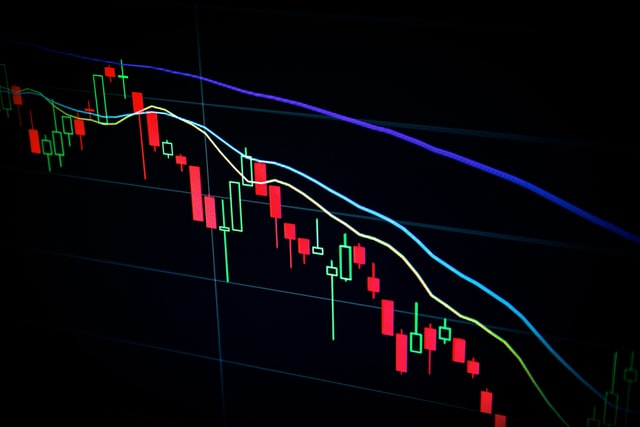Years ago, the only persons who could actively trade in the stock market were those employed by huge financial institutions, brokerage firms, and trading houses. However, changes like the advent of cheap brokerages and internet trading and rapid worldwide distribution of news, and very low commissions have leveled the playing—or should we say trading—field during the last 25 years. The rise in popularity of trading platforms like Robinhood and zero-commission trading has made it simpler than ever for individual investors to try their hand at trading like the pros.
Day trading may be a rewarding profession (as long as you do it properly). However, it might be difficult for beginners, especially if they aren’t properly equipped with a well-thought-out approach. Even the most experienced day traders might run into problems and lose money.
So, what is day trading, precisely, and how does it work?
The Fundamentals of Day Trading
The activity of buying and selling securities in a single trading day is known as day trading. It may happen in any market, but the foreign exchange (FX) and stock markets are the most prevalent. The majority of day traders are well-educated and well-funded. They take advantage of small price swings in highly liquid equities or currencies by using high leverage and short-term trading tactics.
Day traders are keenly aware of the factors that trigger short-term market fluctuations. Trading based on news is a common strategy. Market psychology and expectations influence scheduled releases such as economic statistics, business earnings, and interest rates. When such expectations are not fulfilled or surpassed, markets respond with fast, big changes, which may be beneficial to day traders.
Day traders employ a variety of intraday methods. These are some of the strategies:
Scalping is a trading method that aims to generate modest profits based on small price fluctuations throughout the day.
Support and resistance levels are typically used in range trading to identify buy and sell decisions.
News-based trading: This approach takes advantage of the increased volatility in the aftermath of major news events.
Using sophisticated algorithms, high-frequency trading (HFT) exploits minor or short-term market inefficiencies.
1 A Contentious Practice
On Wall Street, the profit potential of day trading is a hot issue. Day-trading scams on the internet have enticed novices by promising huge profits in a short amount of time. Regrettably, the notion that this type of trading is a get-rich-quick scam continues—some people day trade without having the necessary expertise. On the other hand, day traders make a living despite—or possibly because of—the dangers.
Day trading is avoided by many experienced money managers and financial consultants, and they contend that the gain does not always outweigh the danger. On the other hand, those who day-trade argue that payments may be made. It is possible to make money day trading, but the success rate is lower because it is inherently dangerous and needs substantial skill. Furthermore, economists and financial practitioners claim that active trading tactics underperform a more basic passive index approach over lengthy periods, especially if fees and taxes are included.
Day trading is not for everyone, and it carries many risks. Furthermore, it necessitates a thorough grasp of how markets operate and a variety of short-term profit methods. Though the success tales of day traders who made it big in the market get a lot of press, keep in mind that this is not the case for most day traders: Many will go away, while others will struggle to stay afloat. Furthermore, don’t overlook the importance of luck and timing—while expertise is important, even the most seasoned day trader may be sunk by bad luck.
A Day Trader’s Characteristics
Professional day traders, or individuals who trade for a livelihood rather than for fun, are usually well-known in the industry.
2 They typically have a thorough understanding of the market as well. The following are some of the requirements for being a successful day trader.
In-depth market knowledge and expertise
Those who attempt to day trade without first learning the basics of the market are likely to lose money. A day trader should be able to perform technical analysis and understand charts. Charts, on the other hand, maybe deceptive if you don’t have a thorough grasp of the market and its specific hazards. Make sure you’ve done your homework and know everything there is to know about the items you’re dealing with.
Capital sufficiency
Day traders only take risks with money they can afford to lose. This not only protects them from financial disaster but also lets them trade without emotion. To profit efficiently from intraday market swings, a considerable amount of cash is frequently required. Because most day trading involves a high degree of leverage in margin accounts, and dramatic market movements can trigger large margin calls on short notice, having appropriate funds is critical.
Strategy
A trader needs a competitive advantage over the rest of the market. Swing trading, arbitrage, and trading news are some of the methods used by day traders. They fine-tune these techniques until they consistently earn profits while successfully limiting losses.
Discipline
Without discipline, a lucrative approach is pointless. Because they fail to create transactions that satisfy their own standards, many day traders lose money. “Plan the trade and trade the plan,” as the phrase goes. Without discipline, success is impossible.
Day traders rely largely on market volatility to make money. If a stock fluctuates a lot during the day, a day trader may find it appealing. This might occur for a variety of reasons, such as an earnings report, investor attitude, or even broad economic or corporate news.
Day traders also like highly liquid equities since they allow them to adjust their positions without affecting the stock’s price. Traders may acquire a purchase position if the price of a stock rises. If the price declines, a trader may elect to sell short in order to profit when the price drops.
A day trader, regardless of strategy, is typically trying to trade a stock that moves (a lot).
Working as a Day Trader
Professional day traders are divided into two groups: those who work alone and those who work for a larger institution.
The majority of day traders who make a career do so for big players like hedge funds and bank and financial institution proprietary trading desks. These traders benefit from resources like as direct links to counterparties, a trading desk, substantial quantities of cash and leverage, and sophisticated analytical software (among other advantages). These traders are usually aiming for quick profits from arbitrage chances and news events; these tools enable them to take advantage of these less risky day trades before individual traders respond.
Individual traders frequently handle or trade with other people’s money. Few of them have access to a trading desk, but they frequently have close relationships with a brokerage (because of the high commissions they pay) and access to other resources. The restricted breadth of these resources, however, prohibits them from immediately competing with institutional day traders. Rather, they are compelled to take more risks. Individual traders generally use technical analysis and swing trades, along with some leverage, to profit from such minor price swings in highly liquid equities. 3
Day trading necessitates access to some of the market’s most complicated financial services and products. The following is a common list of requirements for day traders:4
A trading desk is available to you.
Traders who work for larger institutions or who manage huge sums of money are frequently given this designation. Instantaneous order executions are provided by the trading or dealing desk to these traders, which is especially critical when abrupt price swings occur. When a merger is announced, for example, day traders interested in merger arbitrage can place their orders before the rest of the market and benefit from the price discrepancy.
Several news outlets
The majority of chances for day traders come from the news; therefore, being the first to know when something noteworthy happens is critical. A typical trading room includes access to numerous main newswires, ongoing coverage from news organizations, and software that monitors news sources for key stories.




